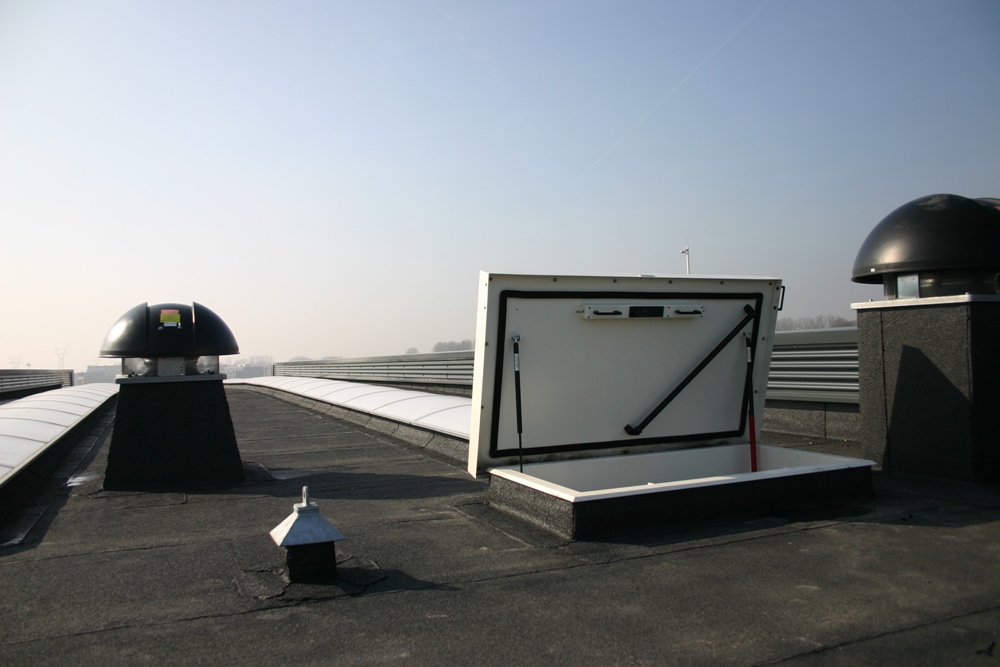Sound insulation of a roof access hatch
Sounds are everywhere, all the time, even at times and in locations where they not wanted. Unwanted sounds become noise. Exposure to noise can create a nuisance, disturb sleep, and hinder daily activities and stress responses. In the Netherlands, road, rail, and air traffic are the most significant sources of noise pollution in residential areas. For a pleasant living environment, therefore, it is essential that structures, including roof access hatches, are able to provide sufficient insulation against exterior noises.
Minimum degree of sound insulation
The minimum degree of sound insulation which a building must provide has been set out in the Dutch Buildings Decree. This requires that exterior partitions of a room or building must have characteristic soundproofing to a minimum of 20 dB in principle. Depending on the function and location of the building, it may be subject to further regulations regarding the highest permissible noise levels, as established in the Dutch Noise Abatement Act. And making this situation more complex is the fact that even though cars, for instance, are becoming quieter and quieter, noise nuisance (the subjective experience of sound as a hindrance) is increasing. For this reason, clients set increasingly high requirements for the sound insulation of buildings under construction.
Roof access hatch with KOMO certificate
Staka has responded to these developments with roof access hatches that are KOMO assessment certified. The KOMO assessment certification shows that the roof access hatch fulfils the standards for exterior partitions as set out in the Dutch Buildings Decree. In addition, Staka has developed a roof access hatch with glass, called the TopLight. This stylish roof access hatch makes use of sound-insulating triple glazing, which provides soundproofing to an impressive 43 dBA. This means that the TopLight's glass window completely fulfils the standards of the Dutch Noise Abatement Act, regardless of where the building is located.
Do you have any questions about the sound insulation of a Staka roof access hatch? Feel free to contact us.

- 2026 © STAKA Bouwproducten B.V.
- PostAds
- All rights reserved.

 UK
UK Nederlands
Nederlands Deutschland
Deutschland US
US La France
La France


